January 2011.
 On January 19th, the Jewish Museum of Florida opens two exhibitions, Seeking Justice: The Leo Frank Case Revisited and Auktion 392: Reclaiming the Galerie Stern, Dusseldorf, which is about restitution of Nazi-looted art. Both are cases where justice was not upheld. Scholars and rabbis have traced a connection between Judaism and the law back to the Bible (Deuteronomy 16:20) and Talmud. “Justice, justice shalt thou pursue” is a strand that ties together all Jews in the law.
On January 19th, the Jewish Museum of Florida opens two exhibitions, Seeking Justice: The Leo Frank Case Revisited and Auktion 392: Reclaiming the Galerie Stern, Dusseldorf, which is about restitution of Nazi-looted art. Both are cases where justice was not upheld. Scholars and rabbis have traced a connection between Judaism and the law back to the Bible (Deuteronomy 16:20) and Talmud. “Justice, justice shalt thou pursue” is a strand that ties together all Jews in the law.
Seeking Justice: The Leo Frank Case Revisited
In 1915, in Atlanta, GA, Leo Frank became the only Jew ever lynched in America. His trial, murder, and the aftermath are the subject of a powerful exhibition created and circulated by The Breman Jewish Museum in Atlanta, GA. The Jewish Museum of Florida is the first travel venue from January 19 through August 14, 2011.
The exhibition recounts the racially charged and tragic events surrounding the 1913 murder of thirteen-year-old Mary Phagan, a white Christian girl, and the lynching of Leo Frank two years later. While not drawing conclusions, Seeking Justice presents evidence about Frank, the Jewish factory supervisor found guilty of murder. After being sentenced to life in prison, Frank was kidnapped from his cell and lynched by prominent citizens of Marietta, Georgia.
Leo Frank’s plight was a turning point for the Jews of Atlanta, and for all American Jews who had fled Europe to escape antisemitism. The commitment to putting this story into historical context is an important contribution to the study of the history of Jews in this country.
The culmination of 20 years of research, the exhibit includes artifacts and documents only recently made public. The case that sparked decades of debate is outlined utilizing artifacts, photographs, and documents relating to both the murder and the lynching. Original newspapers chronicling the case, and interviews with descendants and friends of Leo Frank, Mary Phagan, and other key players in the trial bring new insight to these unsolved murders and the events that led up to them.
About the Case The Leo Frank case had as its backdrop a city torn apart after the Civil War left the economy in ruins. It was a trying time in the industrial revolution-a time of poverty, disease, and child labor. Race riots ensued in 1906-in part because of sensationalized reports of black men assaulting white women, although Jews were singled out in the riots as well. While Jews had lived comfortably in Atlanta for several decades, anti-Semitism and anti-immigration sentiments were rampant. Many residents blamed Jews for the evils of industrialization, as a few prominent Jews owned or operated some of the city’s mills and factories. Yellow journalism spurred-on anti-Jewish sentiment, as did popular entertainment.
This is the climate in which the two unsolved murders took place. On April 26, 1913, Mary Phagan stopped by the National Pencil Company factory where she worked to pick up her paycheck from her supervisor, Leo Frank. Her badly beaten body was found in the factory basement the next morning. The night watchman, Newt Lee, who found her, was the first one implicated. Other suspects included the janitor, Jim Conley, and Leo Frank, who was the last one to see her alive. During the trial, a handwriting analysis of a note left with the body pointed to Conley. However, the jury believed his declaration of innocence because they didn’t think a black person had the wherewithal to make up an alibi and a convincing story. The jury then turned their attention to Leo Frank, whom the press had decided was guilty of rape and murder.
In less than two hours, the jury of white Christian men had found Leo Frank guilty and sentenced him to hang. After exhausting the appeals, Frank’s new lawyers asked for clemency from Governor John M. Slaton. He reviewed the more than 10,000 pages of documents pertaining to the case and commuted the sentence to life in prison. Enraged, a group made up of a former Georgia governor, a state legislator, and a judge, made a deal with prison officials to hand over Frank. He was lynched. Within an hour and a half, 1,000 onlookers had gathered at the scene. This case, which shook the nation, galvanized the Anti-Defamation League, and revived the Ku Klux Klan.
In 1982, new information from a key witness prompted members of Atlanta’s Jewish community to petition for a posthumous pardon. The process ended four years later when a pardon was issued on the grounds that the State failed to protect Frank from the lynchers, rather than as a statement of innocence. The story of the trial, lynching, and search for justice for Frank continues to fascinate; it has been the subject of books, plays, movies, and a musical.
Exhibit highlights include:
– Frank’s stately desk from his office at the National Pencil Company along with his 1906 Cornell University diploma illustrate his success as well as his potential to move up the social and corporate ladder.
– Frank’s diary from jail which shows his frustration with the judicial system, and that he knew Jim Conley to be “a dissolute and a lascivious character,” who “had been arrested several times,” and was
– Trial notes and a scrawled deathbed statement from Conley’s attorney, William Smith. The desperate deathbed note from 1949 avows, “I believe in the innocence and good character of Leo Frank.”
– The door to the infirmary at the State Prison in Milledgeville, Georgia, which was opened to kidnap Leo Frank on the morning of August 16, 1915. It was not damaged in any way, which is clear evidence that the
– “Souvenir” wood pick, made from the tree where Frank was lynched and an accompanying note speak to the normalcy of lynching and witnessing the vigilante crime at the time of Leo Frank’s murder.
– Filmed interviews with descendants of the major figures including Mary Phagan Kean, Mary Phagan’s great-niece; Cathy Smithline, Leo Frank’s great-niece; Elizabeth Slaton Wallace, great-niece of Governor John Slaton; Chuck Clay, great-nephew of Eugene Herbert Clay who was a member of the lynch party; Roslyn Spector, great-niece of Lucille Selig Frank who was the wife of Leo Frank.
– Personal objects belonging to Mary Phagan including a bonnet, nightgown, and a pair of baby shoes. The gallery is designed to
– Letters, including one from Governor Slaton to William Smith, in which he discusses his decision to commute the sentence; and one from Judge Leonard S. Roan to the attorneys for Leo Frank in which he discusses his doubts about Frank’s guilt. Gov. Slaton wrote, that the case, “afforded an opportunity to personally carry into effect what I have always thought was the obligation incumbent upon any man – to do what he thought right regardless of the opinions of others.” Slaton was hung in effigy and called “king of Jews” for his role in the case.
Local sponsors include Robert Arthur Segall Foundation, David Berg Foundation, Jonathan & Tina Kislak Philanthropic Fund and Miami-Dade County Tourist Development Council, the Miami-Dade County Department of Cultural Affairs, the Cultural Affairs Council, the Miami-Dade County Mayor.
AUKTION 392: Reclaiming the Galerie Stern, Dusseldorf
Born in München-Gladbach, Germany in 1904, Max Stern inherited his passion for art from his father, gallery owner Julius Stern. Max Stern studied art history in Germany and Austria, obtaining a doctorate from the University of Bonn. He took over the Galerie Stern after his father’s death in 1934. In 1935, Dr. Max Stern’s license to trade as Galerie Stern, Düsseldorf was withdrawn because he was Jewish. In 1937, he was forced to sell his artworks under extreme duress in the auction titled ‘Auktion 392.’<
br />
After being stripped of his livelihood, he fled to Paris, reportedly carrying nothing but a suitcase. In 1946, he married Iris Westerberg, and the two became owners of the Dominion Gallery in Montreal. In Canada, his career as an art dealer thrived. A pioneer in foregrounding contemporary Canadian painting, he also championed modern sculptors like Jacob Epstein, Henry Moore, Jean Arp, Aristide Maillol and Auguste Rodin. Stern died in 1987. The Max Stern Art Restitution Project was initiated by the Estate of Dr. Stern. The most important work recovered to date is ‘Aimee, a Young Egyptian’ by Emile Vernet-Lecomte, 1869.
This is the unique story of Max Stern, the aryanization policies of Nazi Germany, the racial cleansing and economic strategy employed, the complex legal and moral issues of restitution and the practical difficulties in succeeding. The exhibit consists of paintings (reproductions on canvas) and text panels in three modules depicting 1) the Stern family and Max Stern’s doomed struggle to save his art gallery and collection; 2) the forced auction, with 70 of the missing works reproduced and hung; and 3) the story of restitution of Nazi looted art in general, with current international restitution efforts, including in Florida.
This exhibition was conceived and curated by Dr. Catherine MacKenzie of Concordia University, Montreal and is touring and presented by Ben Uri Gallery, The London Jewish Museum of Art. The Jewish Museum of Florida is its premiere venue in the United States.
This exhibit uncovers the thinly veiled racist legislation devised by Nazi propaganda minister Joseph Goebbels to eliminate Jews from any participation in the German art world. As an education project, the themes in the exhibit can be used to teach issues of morality and justice and to prompt research on the many other art galleries and auction houses in Europe forced to close because of Jewish ownership. The exhibit also inspires visitors to learn about the current issues and challenges confronting those who seek the return of Nazi-looted art, and the need for tighter regulations to hasten the restitution of hundreds of thousands of cultural objects in private and public collections that suffered the same fate as the works from Galerie Stern.
The exhibit will run through April 25, 2011. Local sponsors include American Express Charitable Fund, Roberta & Harvey Chaplin, Funding Arts Network and Miami-Dade County Tourist Development Council, the Miami-Dade County Department of Cultural Affairs, the Cultural Affairs Council, the Miami-Dade County Mayor and Board of County Commissioners.
Jewish Museum of Florida
301 Washington Avenue
Miami Beach, FL 33139
305.672.5044
www.jewishmuseum.com

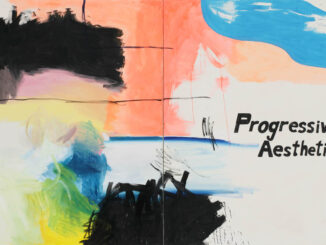
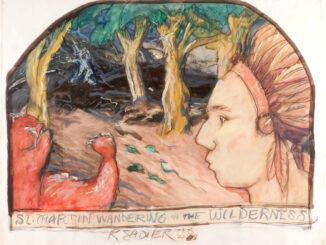
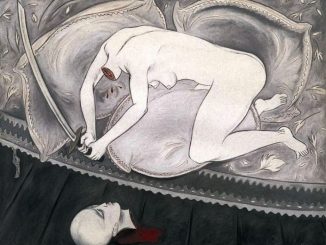
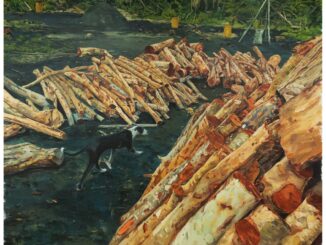
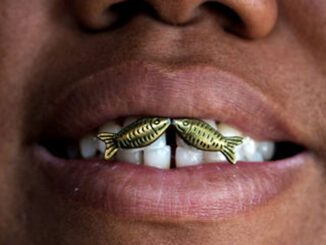
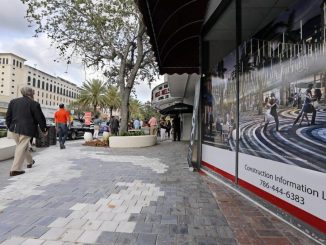
Be the first to comment